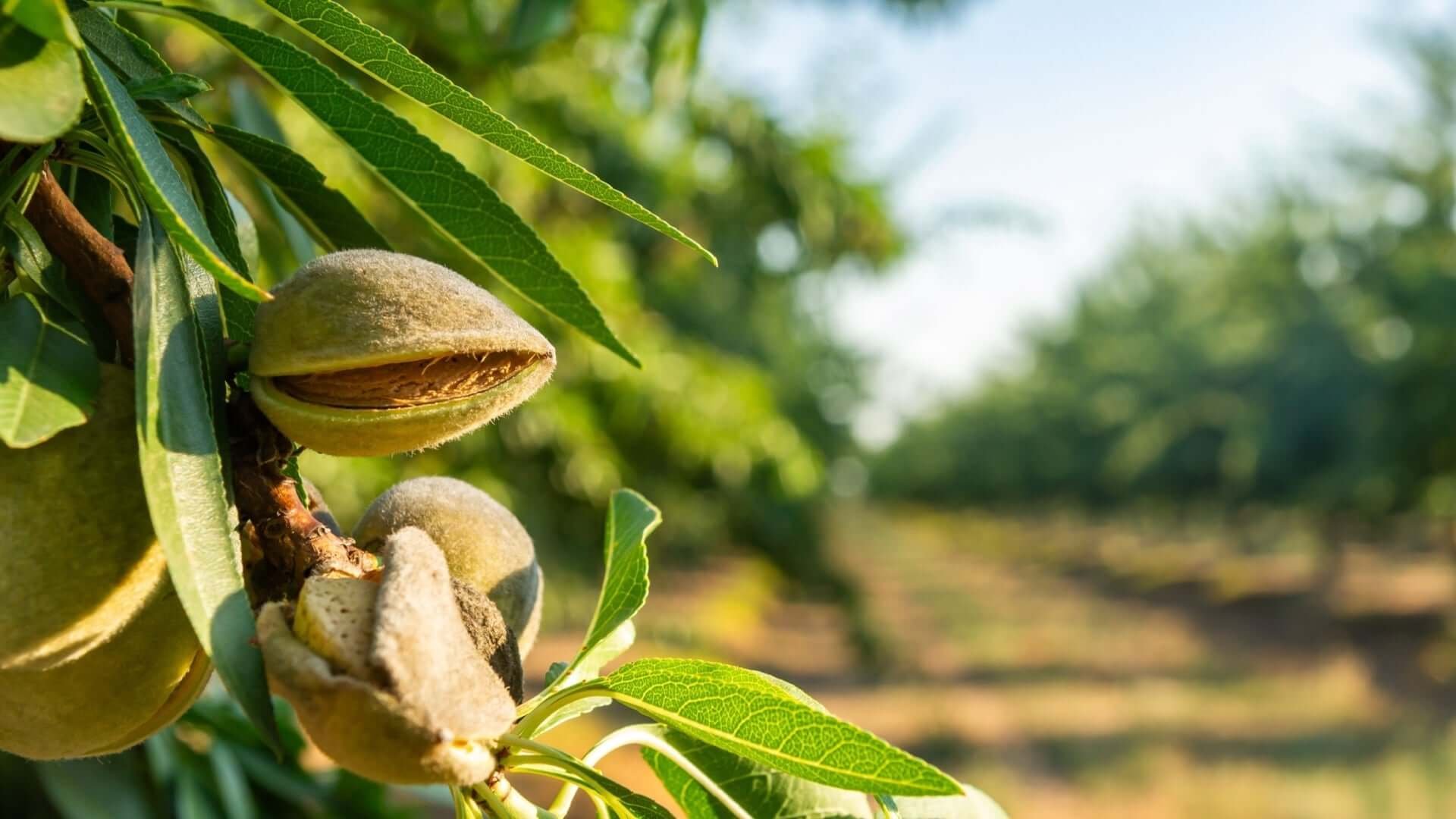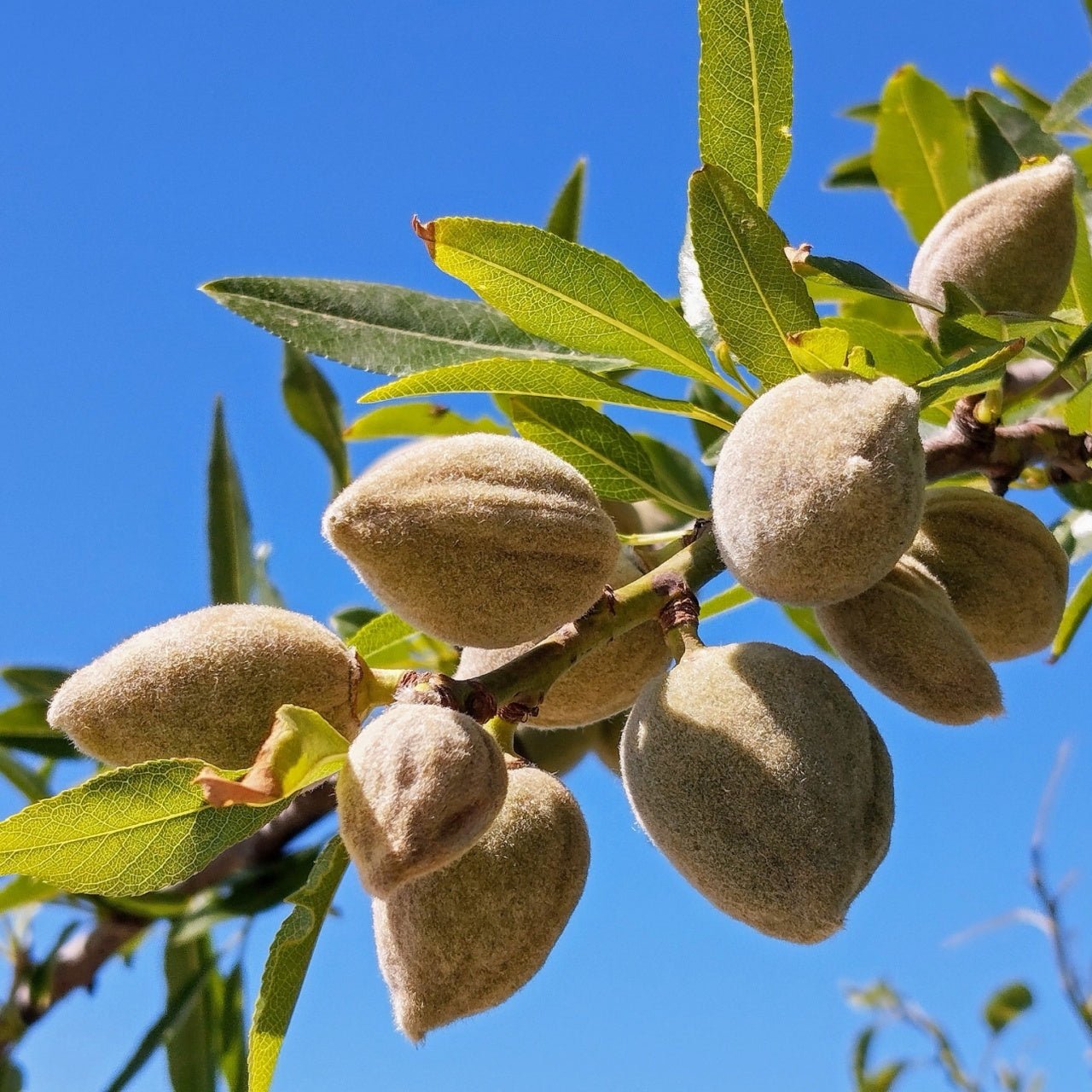Almond trees bring both beauty and bounty to the garden. These graceful trees produce stunning spring blossoms and a delicious harvest of nuts. Though native to warmer climates, they can thrive in various regions with the proper care and conditions. Whether you're a seasoned gardener or just starting, maturing an almond tree can be rewarding, but like many plants, it has specific needs.
Are Almond Trees hard to grow?
Almond trees can be a bit finicky, but they aren't as hard to grow as some might think with the proper preparation. These trees prefer well-drained soil and a sunny spot. Almond trees love warmth, so choosing a location with plenty of sunlight is crucial to their success. In my experience, they thrive best in areas resembling the Mediterranean climate-dry summers and mild, wet winters are ideal. However, almond trees can adapt to less-than-perfect conditions if you provide the proper care and attention.
One of the more challenging aspects of growing almond trees is their temperature sensitivity. They need a long, warm growing season to set fruit, but they're also susceptible to late frosts that can damage their blossoms. A little frost protection in spring can go a long way toward ensuring a bountiful harvest. I've found that planting them on a slope or a raised area helps with air circulation and prevents frost pockets from forming around the tree. When it comes to soil, they need well-draining earth, as standing water can quickly lead to root rot.
Can Almond Trees survive winter?
Almond trees are surprisingly resilient when it comes to colder temperatures, but they do have their limits. While these trees thrive in warmer regions, they can tolerate winter in some colder climates, provided they aren't exposed to extreme frost for long periods. If you're growing them in a zone where winter temperatures dip below freezing frequently, extra care will be needed to help them through the season.
I've learned that choosing a hardy variety of almond trees, such as Hall's Hardy Almond, can increase your chances of success in regions that experience cold winters. However, even the hardiest varieties will need protection in their early years. Wrapping the tree trunk or using tree guards can protect it from frost damage and prevent the young bark from splitting. I recommend adding a thick layer of mulch around the tree's base in late fall. This helps insulate the roots and keeps the ground temperature more stable. Once the tree matures, it will be more resilient, but keeping an eye on winter conditions is always a smart move.
Does it take two Almond Trees to produce fruit?
One of the common misconceptions about almond trees is that they are self-sufficient when it comes to fruit production. While some varieties are self-pollinating, most almond trees require a partner for cross-pollination to bear fruit. Planting at least two trees is usually necessary if you want an excellent almond harvest. This allows pollinators like bees to move between trees and fertilize the blossoms.
Even with self-pollinating varieties, you'll often get a better yield with more than one tree. The pollination process is more effective when multiple trees are used to cross-pollinate. Having two different varieties that bloom simultaneously will significantly increase the amount of almonds your trees produce. I've found that almond trees can benefit from having companion plants nearby that attract pollinators. Placing wildflowers or herbs around the base of the trees will naturally bring bees into the area, which will, in turn, help with pollination.
How long does it take for an Almond Tree to make almonds?
Almond trees are not a quick fix for those looking for instant gratification in the garden. Like many fruit and nut trees, they require patience. After planting, it generally takes three to four years for an almond tree to produce a noticeable amount of fruit. Sometimes, you may even need to wait five years or more to see a good harvest. The tree's early years are about establishing solid roots and a healthy structure, which is essential for long-term success.
While the wait can seem long, those early years are vital for setting up the tree's future productivity. Almond trees that are well cared for in their formative years will reward you with consistent harvests as they mature. Keeping the young trees well-watered and free from competition with weeds or other plants is essential. Pruning the tree in its early years is also vital, as it helps shape it for better sunlight exposure and air circulation. I usually prune almond trees in late winter, before the buds swell, promoting strong, healthy growth when spring arrives.
Once the tree starts producing almonds, it's a rewarding experience. Watching the blossoms turn into fruit is exciting, and by late summer to early fall, the nuts will begin to ripen. At this point, the outer hulls will split open, revealing the almonds inside. Harvesting the almonds is a simple joy; the tree's yield will only improve with each passing year.
Growing an almond tree is a long-term investment in your garden. Though it takes time and care, the combination of beautiful spring blooms and a harvest of tasty almonds makes the wait well worth it. With the right conditions and attention, these elegant trees can flourish and become a focal point in any garden.
Ideal Locations and Uses for Almond Trees
People have valued almond trees (Prunus dulcis) for centuries because of their pretty flowers, healthy nuts, and high adaptability. Knowing where to plant almonds and how to use them properly becomes essential, whether your goal is commercial production or adding a productive ornamental tree to your garden. This section reviews the best growing environments for almonds and the geographic areas where they prosper and explains how to benefit fully from these precious trees.
Almond trees grow best in Mediterranean environments, with gentle winters followed by hot and arid summers. Almond trees require 200 to 400 chill hours below 45°F (7°C) to end dormancy and produce plentiful flowers. In summer, when temperatures stay consistently between 80 to 90°F (27 to 32°C), almond trees experience optimal growth conditions. California's Central Valley, parts of the Mediterranean Basin, Australia's Riverina region, and several Middle Eastern areas are excellent choices for commercial almond orchards because of their suitable temperature conditions. Gardeners living in temperate regions with warm summer temperatures can achieve successful almond cultivation by choosing cold-resistant varieties and creating the appropriate microclimate conditions.
Soil quality is another key factor. Almond trees thrive in well-draining, loamy soil with a moderate to slightly alkaline pH between 6.0 and 7.5. Avoid planting in areas that experience frequent flooding or excessive standing water since heavy or waterlogged soil can result in root rot. Use raised beds or add soil amendments that enhance drainage and aeration if your soil contains clay. Plants should be positioned on slopes or gently rolling terrain to prevent fungal diseases, ensuring water runs off from the root area.
Proper spacing also matters. Almond trees require sufficient space to grow their canopies, maintain adequate sunlight exposure and airflow, and promote healthy production. Commercial orchards typically space trees 15 to 20 feet (4.5 to 6 meters) apart, while backyard gardeners with smaller spaces should choose dwarf varieties. Farmers frequently plant groups of almond trees together because numerous cultivars require cross-pollination and cannot fertilize themselves. Nut yields will experience substantial increases when compatible almond cultivars are planted in proximity to promote effective cross-pollination.
Once established, almond trees are incredibly rewarding. Almond trees produce eye-catching pinkish-white flowers at the start of spring, which marks winter's end and draws in pollinating bees. The vibrant spring blossoms transform into resilient nuts protected by green, fuzzy hulls, which mature and split open in late summer or early autumn to expose the inner shell. Once the almonds are harvested and shelled, they become versatile ingredients suitable for many culinary uses. Almonds are highly valued for their delicious flavor and pleasing texture as they play crucial roles in sweet baked goods, pastries, and savory dishes from Mediterranean, Middle Eastern, and Indian cuisines.
Almonds have crucial culinary uses and offer nutritional benefits, such as a snack containing protein and healthy, essential vitamins and minerals. They can be eaten in many ways, such as raw or roasted and chopped into salads, breakfast cereals, or stir-fries. Plant-based alternative seekers show increasing interest in almond milk, butter, and oil. Almond oil is an ingredient in skincare and cosmetic products because it soothes skin while providing moisture.
Almond trees are attractive to any space because they provide decorative beauty and practical benefits, whether grown commercially or in personal gardens. Growers produce abundant yields by choosing climates that offer proper chill hours and warm summers, maintaining effective soil drainage systems, and mixing multiple tree varieties to ensure intense pollination. These resilient trees demonstrate their historical esteem through their diverse applications in foods, drinks, and skincare products.
Read more

Staghorn sumac offers beauty, wildlife benefits, and adaptability, making it a versatile addition to many garden landscapes. This species has much to offer, whether aiming to create a naturalistic ...

If you're considering planting a redwood tree, it's more than adding a beautiful specimen to your garden. It's about creating a legacy that will likely outlive you and provide a touchstone for the ...



